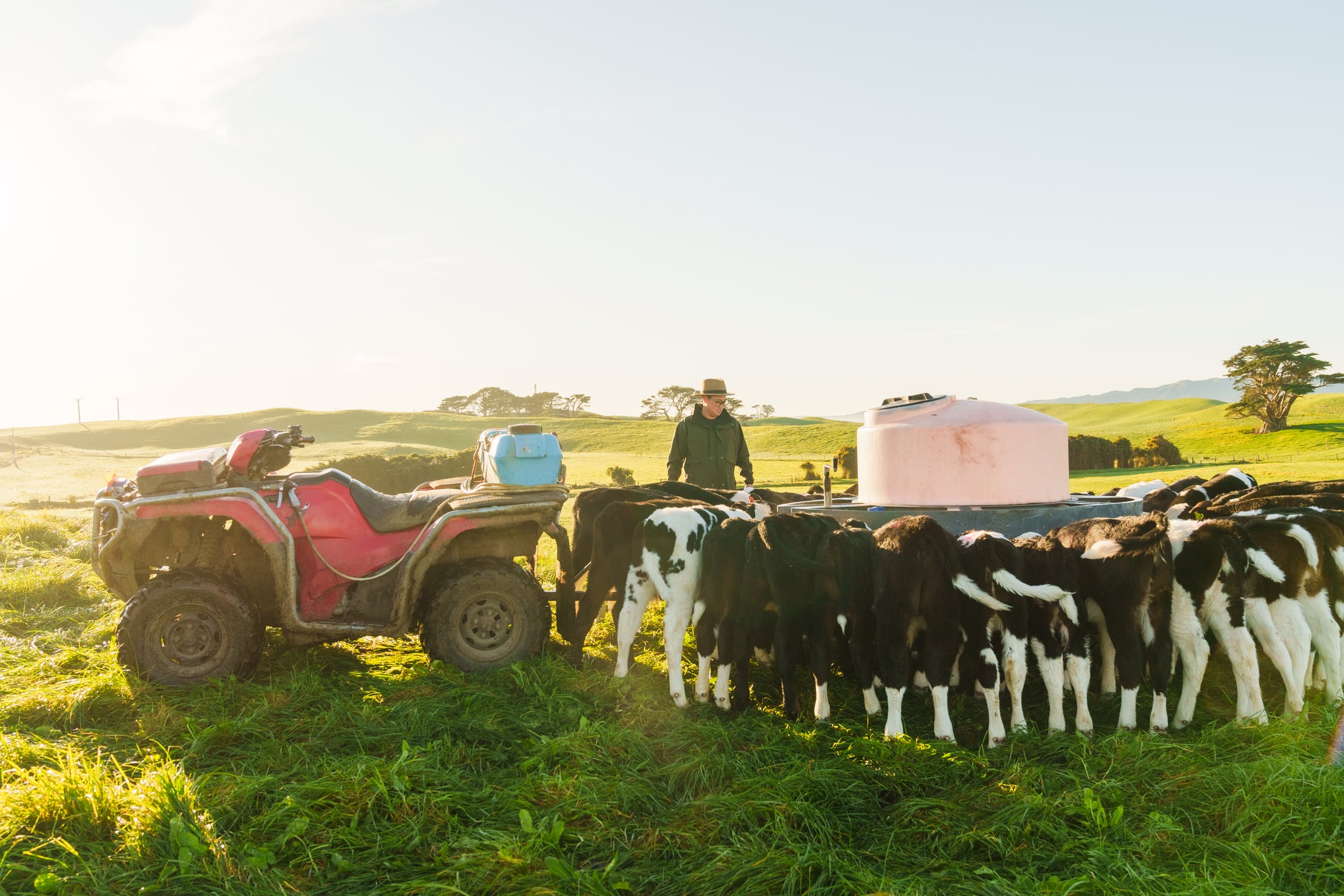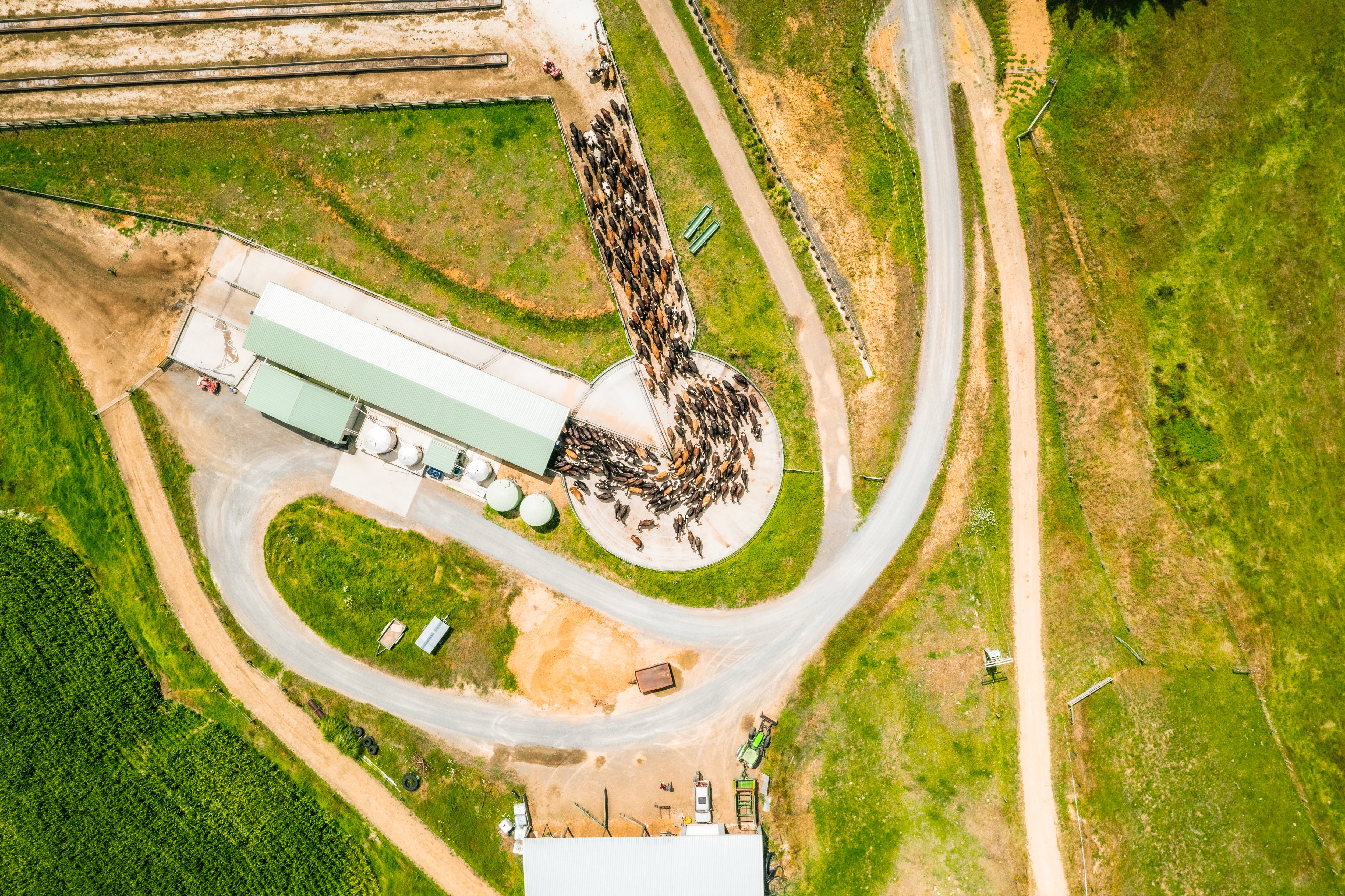Ceres, a Boston, US-based non-profit organization, has published a new report outlining the opportunities for food companies to drive innovation, build resilience, and create a more sustainable and profitable industry by addressing methane pollution.
Methane is a dangerous pollutant – with 80 times the warming potential of carbon dioxide – but it is relatively short-lived in the atmosphere, just 12 years versus carbon dioxide’s 100+ years. As extreme weather events impact farm productivity and animal health and disrupt supply chains, Ceres says its new study, Unlocking Opportunity: Addressing Livestock Methane to Build Resilient Food Systems, highlights the financial case for corporate action.
Since food majors face varying degrees of exposure to risks depending on what they produce, the publication looks to deliver a breakdown of methane risk by sub-industries, from farm to retail.
Carolyn Ching, director of research, food and forests, Ceres, tells FeedNavigator:
“Methane action offers an impactful and immediate way that food companies can address the business challenges created by drought, flood, and worsening storms. Our report serves as a resource for companies and financial institutions to understand the risks and opportunities related to methane emissions in the food sector. It highlights the degree to which companies in the sector are exposed to methane emissions and provides solutions for companies at every level of the value chain.”
Growing regulatory pressure
Recent regulations targeting methane emissions include:
California legislation passed in 2016 to reduce methane emissions from the dairy industry by 40% by 2030 through improved manure management and reduced enteric methane. It encouraged voluntary participation to reduce on-farm methane emissions until 2024 when the regulation became mandatory.
A carbon tax on agriculture, introduced in Denmark, to achieve net zero by 2070. Higher methane-emitting farms, such as those producing dairy, beef, and pork, will pay higher tax than lower emitting farms, such as poultry and crops. Revenue from this tax will be used to defray some of the costs of transitioning to practices to reduce emissions.
Looking to the US, Ching stresses the importance of government policies that deliver needed funds for technical and financial support to farmers to adopt methane-reducing technology as well as research for early-stage innovation, such as the Inflation Reduction Act, which has come under attack in recent weeks.
“In 2024 alone, the Inflation Reduction Action provided $3.1bn to the US Department of Agriculture (USDA) for climate-smart agricultural activities. We also need to see another robust Farm Bill passed.”
Ching notes that $2bn from the US Farm Bill last year went to fund initiatives such as the Environmental Quality Incentives Program, which provides technical and financial assistance to farmers to integrate conservation into working lands.
“Companies can play a crucial role in advocating for these bills. Last year, we saw several companies step up to support the Enteric Methane Innovation Tools for Lower Emissions and Sustainable Stock (EMIT LESS) Act and the Innovative Feed Enhancement and Economic Development Act (IFEED). Both of which were designed to enable and accelerate the adoption of methane-reducing solutions.”
Global alliances
Awareness is growing of the importance of reducing methane emissions to reduce risks. Initiatives like the Global Methane Pledge (with 158 countries committing to a 30% reduction by 2030) and the Dairy Methane Action Alliance demonstrate the appetite for change.
Financial risk
Climate risk presents material financial risks to companies and their investors, argues Ching.
“To mitigate the climate risk in their portfolio and ensure good returns for their beneficiaries, financial institutions can engage companies that source or produce dairy, beef, and pork, to address their methane emissions. As our new report outlined, there are three key areas that investors can ask companies about: methane accounting, disclosure, and action plans to reduce emissions. This information will give insight to a company’s preparedness to address this potent pollutant and its contribution to their total emissions.”
Climate change poses a direct threat to livestock health and productivity, disrupting feed availability, reducing quality, increasing heat stress, spreading diseases, and causing higher mortality during extreme weather events, she says.
“One prominent example was that the US faced a historic low for beef herds and dairy supply in 2024, largely due to heat stress and drought.”
Reputational risk
Another major methane-related risk facing food companies is reputational. Companies that do not address the impacts of emissions, including methane from livestock, run the risk of negative publicity that could impact their brand reputation or even spark accusations of greenwashing, continues Ching.
“In addition, companies are exposed to evolving market risk from methane. Companies with livestock in their supply chain that fail to adapt to changing consumer demand with innovative products and action to reduce their total and methane emissions risk losing market share. Similarly, suppliers failing to address emissions, and methane may be at risk of losing contracts due to not meeting their customers' sustainability standards.”
Reputational risk has also extended to institutions that finance the livestock sector, finds Ceres’ report. Banks have received scrutiny for continuing to provide new credit to producers of meat, dairy, and animal feed. Critics claim that emissions from livestock undermine the banks’ environmental commitments and increase their exposure to risk.
Litigation
Increasingly, legal actions are being taken against high emitting companies, including food companies, that may be responsible for escalating climate-related damages.
Food companies sourcing livestock products are being challenged in the courts for inadequate disclosure of plans to reduce methane and total emissions in line with stated goals to reduce emissions and climate risk. Negative publicity from lawsuits further exposes companies to reputational damage.
JBS, the world’s largest beef producer, faces litigation, as well as brand reputation risk from a suit by the state of New York for misleading the public on the business’ impact on the environment to boost profits, citing that the company has no viable plan to reduce carbon pollution despite a public goal of net zero by 2040.
Tyson is dealing with a similar lawsuit from nonprofit, Environmental Working Group, for failing to disclose a credible plan to reach net zero emissions by 2050 as claimed and marketing ‘climate-friendly’ beef.
How feed additives can be beneficial
As regards food company smart climate actions that stand out, Ching highlights Nestlé’s reduction of GHG emissions across its value chain by 13.5% in 2023, including its reported 15.3% reduction in methane, in part by addressing FLAG emissions through collaborations with suppliers and farmers on ingredients, including dairy.
She also references Mars partnership with dairy cooperatives and manufacturers globally, working with farmers to adopt practices and technologies that reduce methane emissions, such as improving feed ingredients and introducing feed additives.
“These partnerships have helped Mars reduce its total emissions by 16% in 2023 compared to its 2015 benchmark, setting the company on the path to meet its target to reduce total emissions by 50% by 2030.”
Meanwhile, Danone Ventures, a corporate venture group within Danone, has invested in methane reducing technology providers such as Symbrosia, a seaweed-based feed additive to reduce methane emissions, and ImaginDairy, producer of animal-free dairy products, adds Ching.
Approaches that maximize production, such as reducing the time it takes for an animal to reach slaughter weight or increasing milk production per cow, can reduce methane intensity, which is a key step in reducing total emissions. However, reducing methane intensity of production may not result in reduced absolute emissions as increased production can offset mitigation effects. Technologies that reduce absolute methane emissions, such as feed additives and anaerobic digestors, can help make up that difference, explains the Ceres research lead.
“A path to successfully tackle on-farm methane pollution should ultimately be flexible, and consider factors like farm size, region, and technology availability. This allows different farm systems to employ the solutions and practices that fit their individual operations.”
Environmental stewardship
The Ceres study outlines how chocolate producer, Barry Callebaut, implemented its VisionDairy program to engage suppliers and partners in its milk supply chain on animal welfare, farm performance, and environmental stewardship, including by providing incentives to farmers who reduce methane using feed additives and carbon dioxide via regenerative practices.
It notes that UK retailer Tesco is also tackling methane, it is partnering with one of its largest milk producers to pilot a methane-reducing feed additive, Bovaer, from dsm-firmenich. If the pilot is successful, Tesco plans to expand use of the feed additive across the Tesco Sustainable Diary Group, a group of 400 British dairy farmers who receive premium price for their milk so that they can invest more in animal health and welfare, carbon reduction, and biodiversity.
However, a UK consumer backlash against the use of such additives could prove problematic.
Meawhile, it highlights the work done by dsm-firmenich, which has been partnering with global cooperatives and companies the past few years to pilot and scale its methane targeted feed additive, Bovaer. It has kickstarted alliances with Dairy Farmers of America in the US, FrieslandCampina, Arla, Nestlé, and Bel Group in Europe, Mengniu & Modern Dairy in China, and Meji in Japan.
Methane reduction - who pays?
But how can food companies balance the cost of methane reduction initiatives with a return on investment?
“To implement methane reduction activities today, stakeholders are implementing a range of solutions. Some companies are partnering with suppliers, customers, and other peer companies to collectively invest in projects on farms. They are also identifying government programs to support the cost of implementing practices. For example, the Maryland and Virginia Milk Producers Cooperative Association partnered with customers throughout the value chain, including Turkey Hill, Giant, and Starbucks, and the Alliance for the Chesapeake Bay, to fund sustainability projects on the farm through cost-sharing opportunities, direct funding from customers, and grants from government programs.
“In the long term, investing in these activities helps bolster farmer resilience, and in turn the companies that source from them,” maintains Ching.



